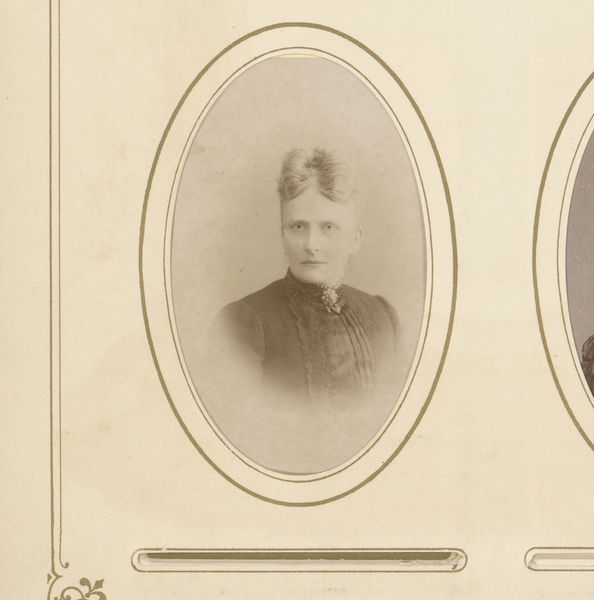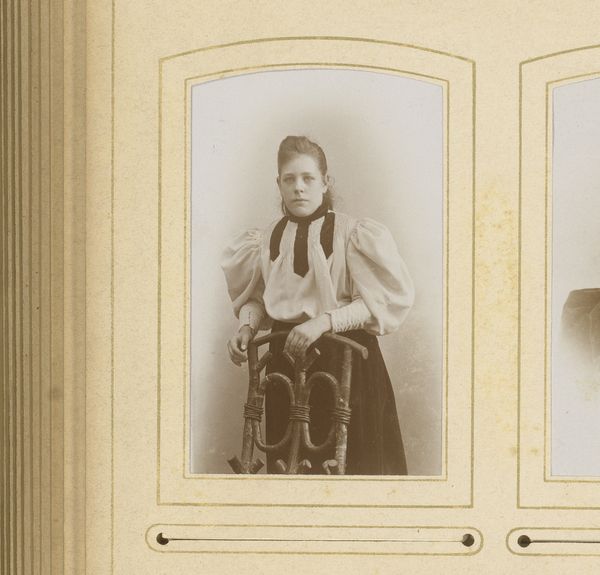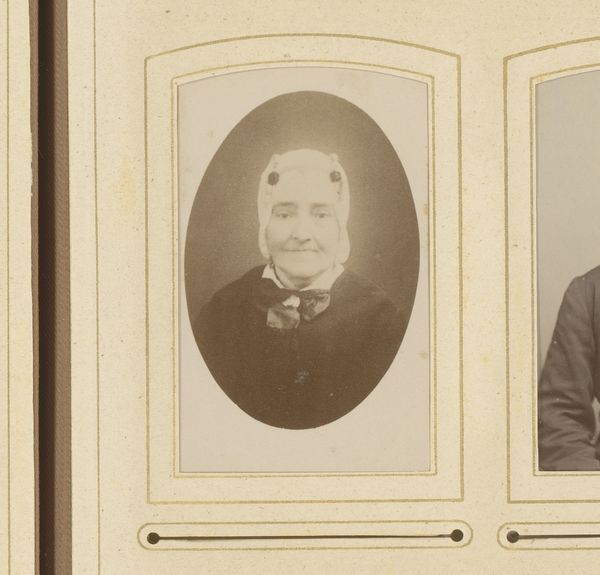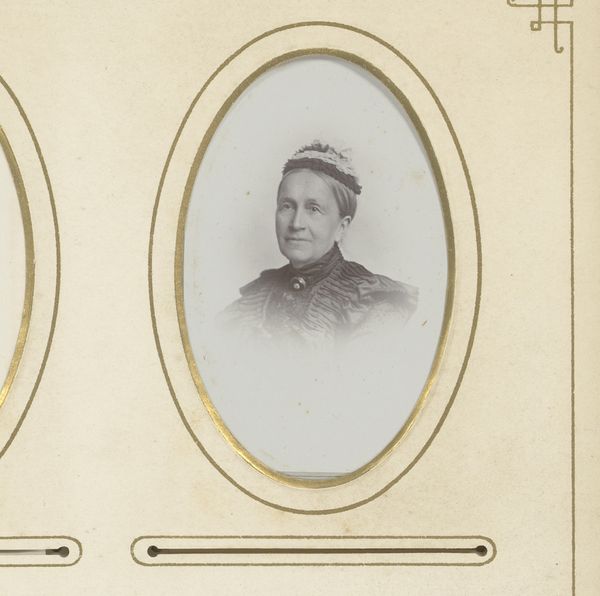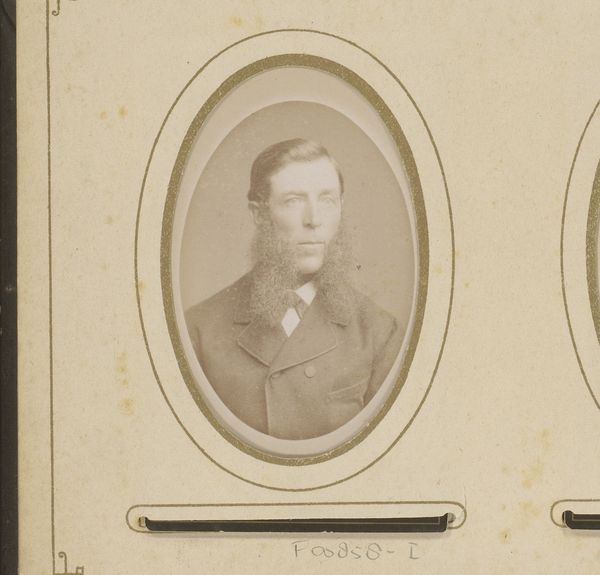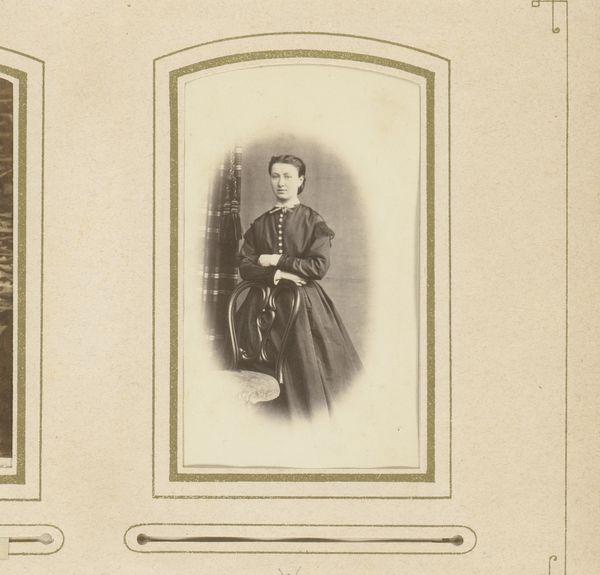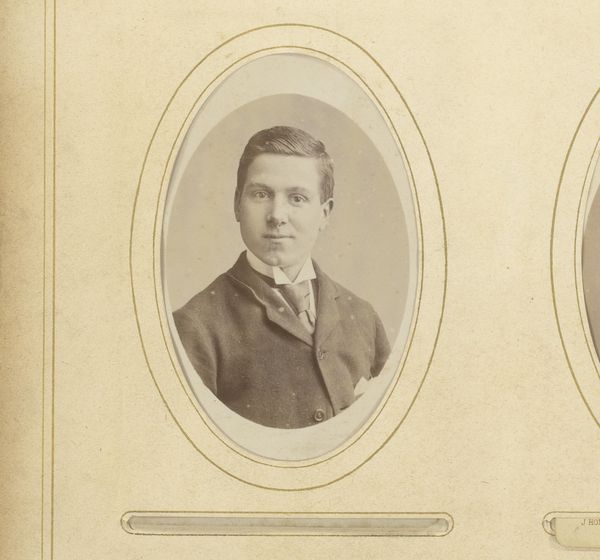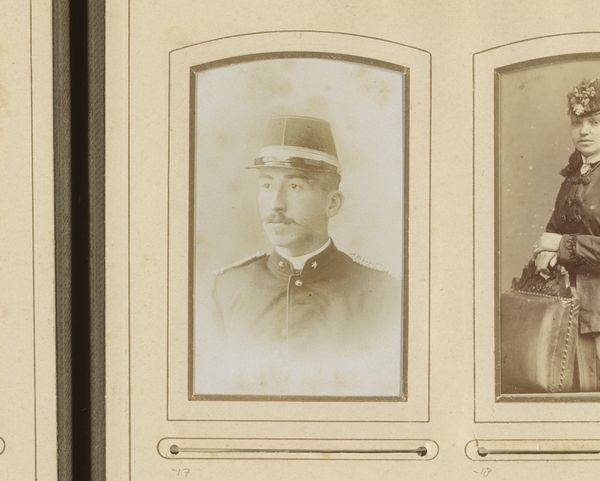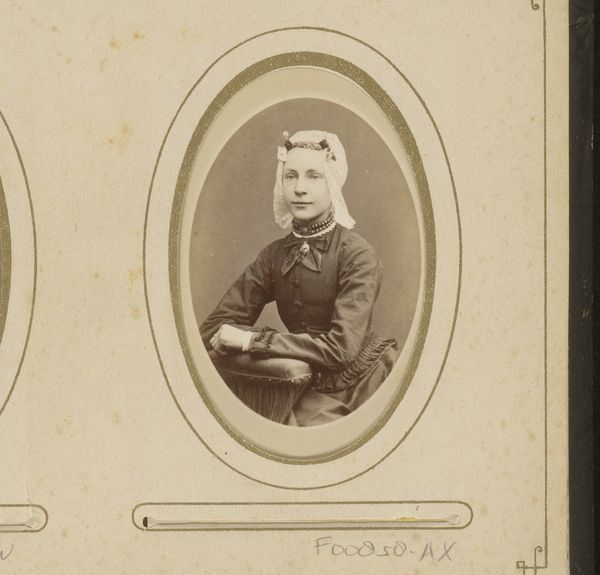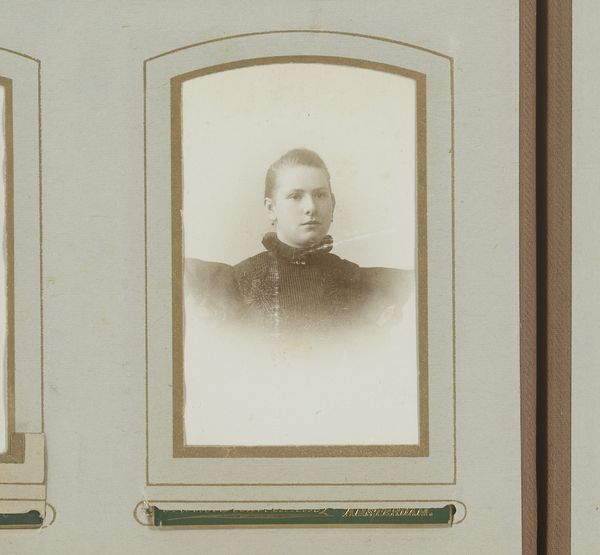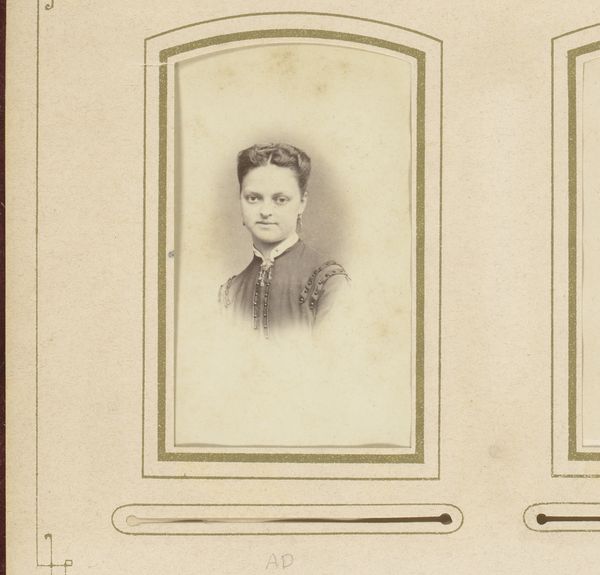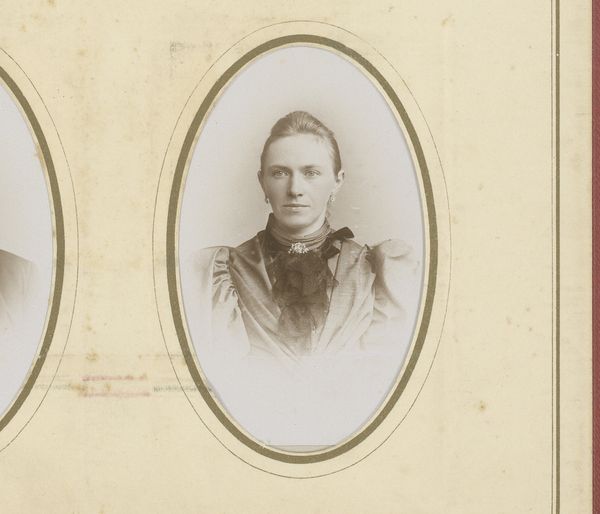
photography
#
portrait
#
photography
#
historical photography
#
19th century
Dimensions: height 85 mm, width 51 mm
Copyright: Rijks Museum: Open Domain
Curator: This photograph, entitled "Portret van een jongen op een stoel met een boek in de hand" by Jhn. Johs. Schröder, dates roughly from 1895 to 1920. It immediately strikes me with a sense of faded formality. Editor: Indeed. It’s a muted, almost solemn portrait. I notice first the oval frame around the image – a presentation style indicative of the era – immediately creating a sense of preciousness and perhaps the status of the subject. Curator: The production methods for these types of portraits were quite standardized. The subject would come to a photographer’s studio that were appearing in every big and middle size city at that time, they are typically positioned and lit for the photograph; a technician and artist has prepared every stage in production for a customer who wants to have an iconic photo with an iconic figure to display, indicating access and prosperity, the quality of image and paper matters and every part indicates production investments to gain status. Editor: And that presentation shaped not only the family album but, more broadly, social aspirations and values within bourgeois society, projecting this image of themselves. That the boy holds a book becomes central to constructing an idea around intellect, and that they are a reading and thus enlightened, family. I see some framed picture or books on the table beside him; so, there are already messages layered inside a photo inside a picture. Curator: Precisely. Notice the detailing on the chair and even the boy’s clothing, indicating that he is maybe part of the new growing class, they gain stability after the war of 1870. In production they use clothing, set pieces and other features of photography as a tool to signify social and cultural elevation. I also wonder what type of material and printing processes that Jhn. Johs. Schröder did use. Editor: This image and similar photographs became ways to shape public memory. Here the social values surrounding childhood and education take a form; to create family legacy – and these were readily consumed and valued by middle class society in particular, offering visual affirmations of their own successes. Curator: That's a valuable point. These were almost like early forms of public relations or marketing for families wanting to establish themselves. Seeing this image makes you think about all involved in the production line and logistics to put families on display, for good. Editor: Exactly. Looking closer helps reveal the story embedded in its creation and its function to promote family belonging to broader ideals.
Comments
No comments
Be the first to comment and join the conversation on the ultimate creative platform.
